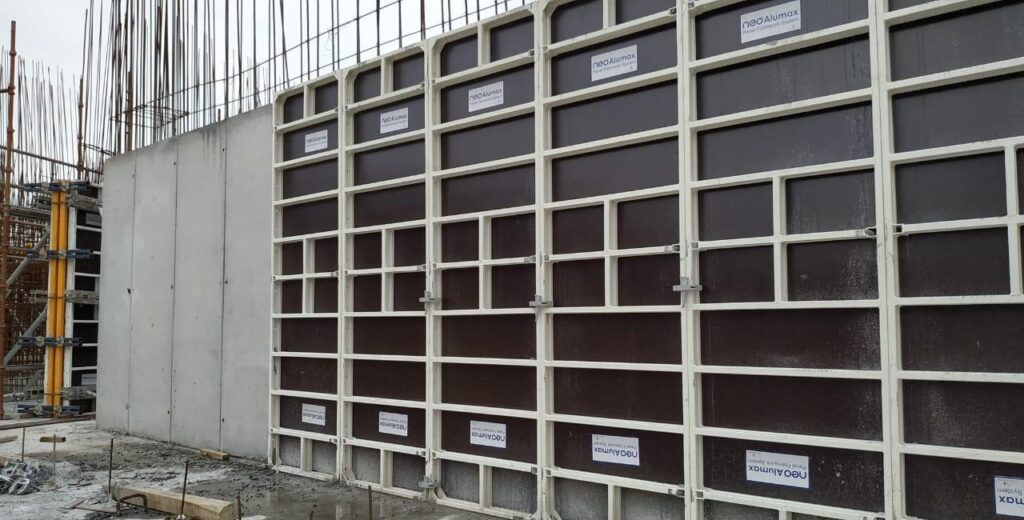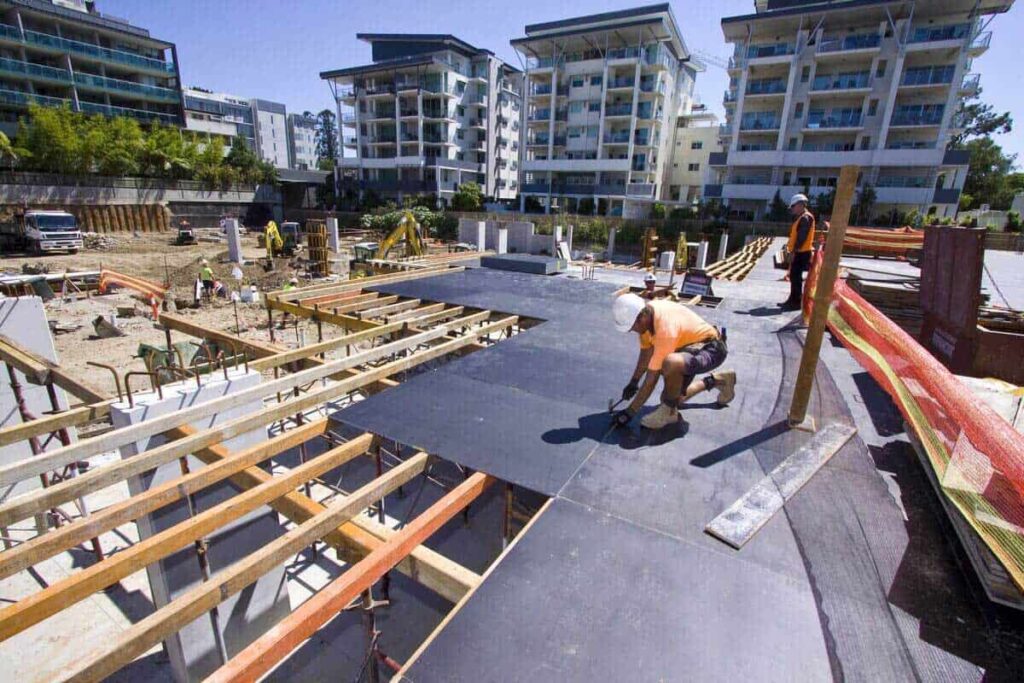Formwork plywood plays a crucial role in construction projects, providing temporary support and stability to concrete structures. However, like any construction material, it can experience various issues that may affect its performance and durability. In this article, we will delve into the common problems that can arise with formwork plywood and discuss effective troubleshooting techniques and maintenance tips to ensure its longevity and functionality.
Understanding the Basics of Formwork Plywood
Before we delve into troubleshooting, let’s first establish a solid understanding of the basics of formwork plywood. Formwork plywood, also known as F14 grade plywood, is a specific type of plywood that is engineered to withstand the rigors of concrete construction. It is designed to provide a smooth and even surface for concrete placement while offering strength and durability.
Formwork plywood is a critical component in construction projects, especially in concrete formwork applications. Its ability to withstand the pressure and weight of freshly poured concrete makes it an indispensable material on job sites. The versatility of formwork plywood allows contractors to create intricate shapes and designs with ease, making it a popular choice in both residential and commercial construction.

Key Components of Formwork Plywood
Formwork plywood consists of multiple layers of thin wood veneers, typically made from hardwood or softwood, which are bonded together using adhesive. These layers are cross-laminated, meaning the wood grain of each layer is oriented perpendicular to the adjacent layers. This construction gives formwork plywood its exceptional strength and dimensional stability.
The quality of the adhesive used in bonding the layers of formwork plywood is crucial to its performance. High-quality adhesives ensure that the plywood can withstand the moisture and pressure exerted during concrete pouring, maintaining its structural integrity throughout the construction process. Additionally, the smooth surface of formwork plywood allows for easy release of the concrete once it has cured, resulting in a flawless finish. Click here to get about future trends in formwork plywood technology and use.
The Role of Formwork Plywood in Construction
Formwork plywood acts as a temporary mold or framework that holds the concrete until it sets and gains sufficient strength to support itself. It provides the necessary support and shape while concrete is being poured and allows for the creation of a variety of structures, including walls, columns, beams, and slabs. It also ensures that the concrete surface is free from imperfections and achieves the desired finish.
Due to its reusability and durability, formwork plywood is a cost-effective solution for construction projects. Its ability to withstand multiple uses without compromising its structural integrity makes it a sustainable choice for contractors looking to reduce waste and optimize resources. Proper maintenance and handling of formwork plywood can extend its lifespan, making it a valuable investment for construction companies seeking long-term efficiency.
Identifying Common Problems with Formwork Plywood
Despite its resilience, formwork plywood can encounter several issues that affect its performance and usability. Identifying these problems early on is crucial to prevent further damage and ensure a successful construction process.
Warping and Bowing Issues
One of the primary issues with formwork plywood is warping and bowing, which can occur due to uneven moisture exposure or improper storage. This can result in an uneven and distorted surface, making it difficult to achieve a smooth concrete finish. Regular inspection and careful handling are essential to identify and address this problem promptly.
Delamination and Surface Defects
Delamination and surface defects are other common issues faced with formwork plywood. Delamination refers to the separation of layers within the plywood, leading to a weakened structure. Surface defects may include splintering, chipping, or cracking, which can compromise the stability and quality of the concrete work. Timely repairs and replacement are vital to maintain the integrity of the formwork. You can learn more about how do you stop plywood delamination on https://www.quora.com/How-do-you-stop-plywood-delamination.
Moisture and Rot Problems
Moisture and rot pose significant threats to formwork plywood. Exposure to excessive moisture can cause swelling, warping, and decay, rendering the plywood ineffective. It is crucial to prevent prolonged contact with water and use appropriate protective coatings or sealants to enhance its resistance to moisture. Regular cleaning and drying are essential to mitigate these issues.
Additionally, it is important to consider the impact of temperature on formwork plywood. Extreme heat or cold can cause the plywood to expand or contract, leading to warping or cracking. Proper storage and acclimatization of the plywood before use can help minimize these temperature-related problems.
Furthermore, the quality of the plywood itself can play a significant role in its performance. Low-quality plywood may have inconsistent thickness, weak bonding between layers, or knots and voids that can compromise its structural integrity. Investing in high-quality formwork plywood from reputable suppliers can help reduce the risk of encountering these issues.
Troubleshooting Techniques for Formwork Plywood
When faced with issues related to formwork plywood, it is essential to employ effective troubleshooting techniques to rectify the problems and restore its functionality. Understanding common issues and knowing how to address them can significantly impact the quality and longevity of the formwork plywood.
One important aspect to consider when troubleshooting formwork plywood is the quality of the material itself. High-quality plywood with the right specifications for the intended use can help prevent many common issues such as warping, delamination, and rot. Investing in good quality plywood from reputable suppliers can save time and resources in the long run.
Fixing Warping and Bowing
If warping or bowing is detected, the plywood should be carefully inspected to identify the extent of the damage. In some cases, minor warping can be corrected by applying targeted pressure and utilizing appropriate bracing techniques. However, severe cases may require replacement to maintain the structural integrity of the formwork.
It’s important to note that proper storage of plywood can also help prevent warping and bowing. Storing plywood flat in a dry area with even weight distribution can minimize the risk of deformation over time. Additionally, using the plywood within its load-bearing limits can prevent excessive stress that may lead to warping.

Addressing Delamination and Surface Defects
Delamination and surface defects should be addressed promptly to prevent further deterioration of the formwork plywood. Small areas of delamination or surface damage can be repaired by removing the affected layers or applying suitable epoxy adhesive. However, extensive delamination or significant defects may necessitate the replacement of the plywood to ensure adequate support and durability.
Regular maintenance and inspection of formwork plywood can help identify delamination and surface defects early on. By addressing these issues promptly, the overall integrity of the formwork can be preserved, reducing the risk of structural failures during construction.
Preventing and Treating Moisture and Rot
Preventing moisture and rot is imperative for the longevity of formwork plywood. It is essential to store and handle the plywood in a dry and well-ventilated environment to minimize moisture absorption. Applying appropriate sealants or coatings can enhance its resistance to moisture. Regular inspections and prompt repairs are crucial to address any areas of damage or decay.
Furthermore, incorporating proper drainage and ventilation systems in the formwork design can help prevent moisture buildup and reduce the risk of rot. By taking proactive measures to protect the plywood from moisture-related issues, its lifespan can be extended, ensuring the safety and stability of the construction project.
Maintenance Tips for Formwork Plywood
Proper maintenance practices can significantly extend the lifespan and effectiveness of formwork plywood, ensuring its continuous performance throughout construction projects. Here are some additional tips to help you maintain your formwork plywood:
Regular Inspection and Cleaning
Frequent inspections should be conducted to identify any signs of damage, warping, or moisture-related issues. Cleaning the plywood surface regularly can help remove dirt, debris, and potential contaminants that may compromise its durability and functionality. Additionally, it is important to pay attention to the edges of the plywood, as they are more susceptible to damage. Inspecting and cleaning the edges can help prevent premature wear and tear.
Proper Storage and Handling
Formwork plywood should be stored in a clean, dry, and well-ventilated area to prevent moisture absorption and minimize the risk of warping or rot. It is recommended to store the plywood on a flat surface, with support at regular intervals to prevent sagging. When handling the plywood, it is important to use proper lifting techniques to avoid unnecessary stress on the material. Additionally, stacking the plywood carefully, with protective padding between each layer, can help prevent scratches and dents during transportation and storage.
Effective Repair and Replacement Strategies
Timely repairs and replacement are crucial for maintaining the integrity of formwork plywood. When damage or defects are identified, prompt action should be taken to address the issue. Repairing small areas of delamination or surface damage can be done with epoxy adhesive, while extensive damage may require the replacement of the affected plywood. It is important to use the same grade and thickness of plywood for replacements to ensure uniformity in the formwork system.
By understanding the basics of formwork plywood, recognizing common problems, implementing effective troubleshooting techniques, and following proper maintenance practices, construction professionals can overcome the challenges associated with formwork plywood and ensure successful and durable concrete structures. Remember, investing time and effort into the maintenance of formwork plywood will not only save you money in the long run but also contribute to the overall quality and safety of your construction projects.
Other article: Choosing a niche as a buyers agency in Sydney

